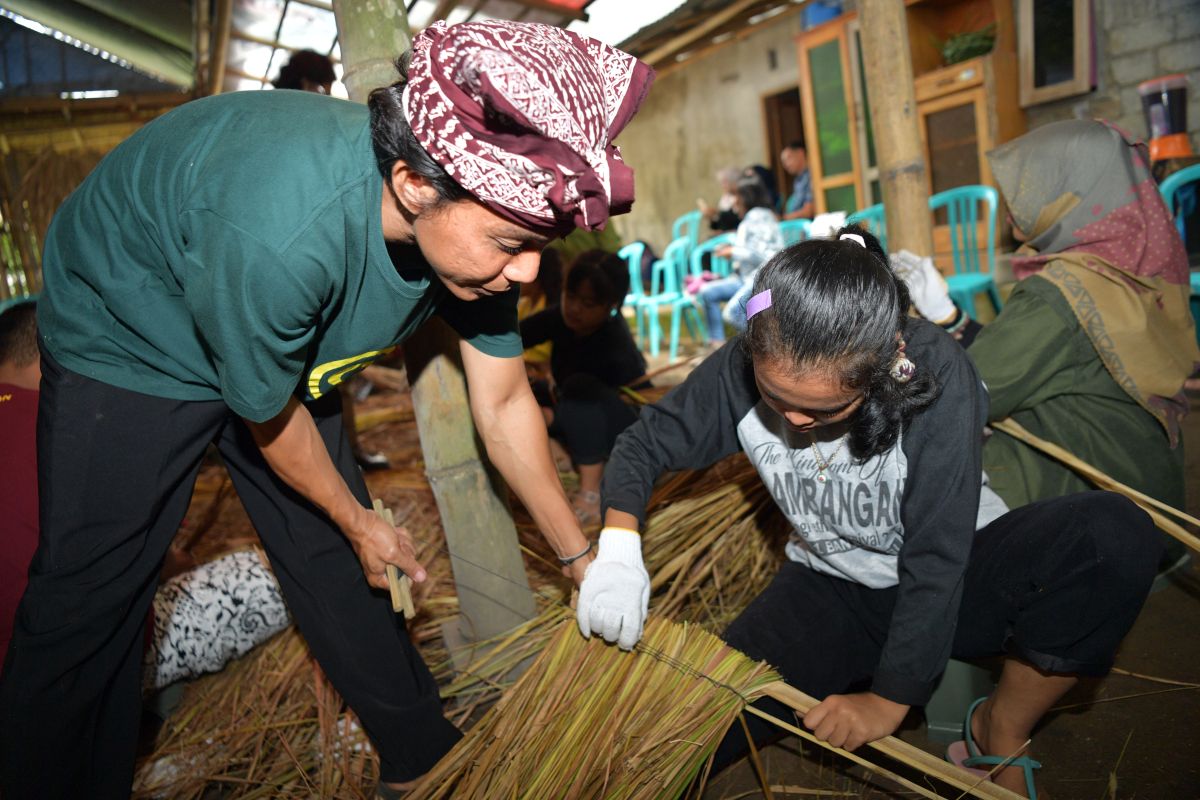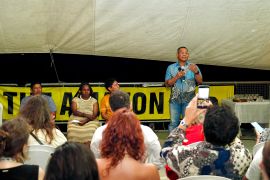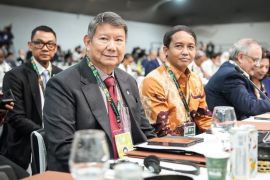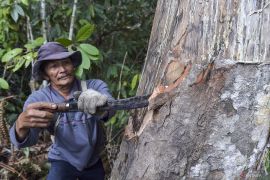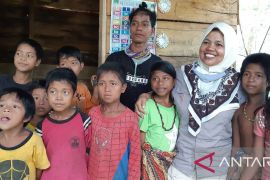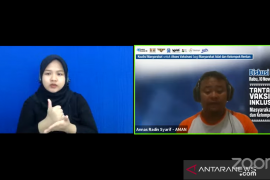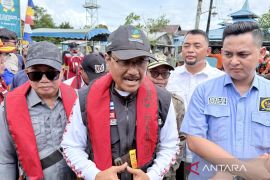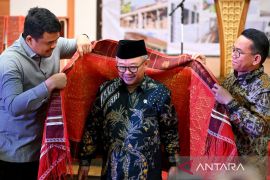These children diligently listened to Budi Hartono's instructions on making a craft from weaving thatch grass (ilalang).
Budi Hartono, known as Cak Bud, is an ilalang weaving practitioner.
Students taught at the customary school "Sekolah Adat Osing Pesinauan" were seen enthusiastically practicing ilalang weaving, or known as melit.
The thatch grass must be separated from other grass and a piece of bamboo must then be cut into half and slivered thin.
Two bamboo cuts used were bungkon sized three centimeters (cm) and another measuring five cm called jalen.
A rope made of cut-thin bamboo, called "branding," was also prepared.
Cak Bud elaborated on the three techniques in weaving thatch grass.
The first technique called "belok" uses one bungkon and two jalen bamboos that are then tied with the branding.
In the second technique known as "sepeg," a small handful of grass is tied, while in the third technique, called "selimpet," one bungkon and one jalen bamboo are tied with branding.
On that occasion, Cak Bud showed the selimpet technique to the students, as it is commonly used to build roofs of thatch grass.
While weaving, it is recommended to wear long-sleeved clothing to prevent itching in the hands.
Cak Bud affirmed that patience and perseverance are of the essence in pursuing this craft, as the process is quite tedious.
The practice of weaving grass is an effort to motivate the youngsters of the Osing tribe to learn about the craft.
Another practitioner, Slamet Djharjo, nicknamed Cak Sul, stated that the Osing weaving craft was initially used for making the roofs of ancestral tombs but he and Cak Bud then took the initiative to commercialize the craft.
Through the commercialization effort, he is optimistic that it would empower the women of the Osing indigenous tribe to serve as thatch grass-weaving artists and men to take on the role of grass collectors.
Cak Bud has left no stone unturned in his efforts to market the thatch grass craft through offline mediums and the marketplace.
This craft practice started by Cak Bud and Cak Sul in 2019 was initially practiced when they conducted maintenance of their ancestors' tombs, namely Buyut Semi and Buyut Celi.
Thatch grass is merely cogon grass or contributes as garden waste, but Cak Bud and Cak Sul can turn them into crafts of high economic value.
Several hotels, restaurants, and cemeteries have now used ilalang crafts for roofing, decoration, and interior designs.
The Pesinauan School
The Osing indigenous community apart from possessing the skill to process thatch grass to economically empower members also has the Pesinauan Customary School.
This community school was established by the Osing Regional Management of the Alliance of the Indigenous People of the Archipelago (PD AMAN).
Pesinauan was established and has been active since January 21, 2021. Cak Sul is one of the founders.
Cak Sul, a graduate of the Wilwatika College of Arts in Surabaya City, East Java, also serves as Head of the Performing Arts Department at the public vocational high school SMKN 1 Banyuwangi.
In 2022, he acquired the status of a contract-based civil servant (PPPK).
On the sidelines of his teaching duties, he teaches dance and other arts to children in Pesinauan.
"It is fun," Cak Sul told ANTARA on being asked what it was like to pioneer and build a traditional school.
Pesinauan is located on land owned by Cak Sul. His dedication to cultural arts drove him to use his own land for the Pesinauan location.
The school is managed and operated in keeping with the young people's needs without disturbing the children's learning activities in formal schools.
Currently, the school has 40 students, ranging from children in kindergarten to high school. They are all children of the Osing tribe from the villages of Tamansuruh, Kemiren, and Olehsari.
In Pesinauan, these children were taught dance, music, weaving, silat martial arts, dress-up, and making the local snack called kelemben.
Not only children but also several adults have become students in Pesinauan. They usually take part in reading the Yusup palm-leaf manuscripts.
Not only for the Osing indigenous people but the Pesinauan School is also open and free to anyone interested in studying there.
Government's support
The Education, Culture, Research, and Technology Ministry strongly supports the existence of Pesinauan School in the Osing community.
A cultural expert officer at the ministry, Aji Widayanto, stated that the programs prepared by Pesinauan can preserve and spread the wisdom of the Osing indigenous people as part of strengthening their community in Indonesia.
Strengthening indigenous people is important, as they contribute to harmony and order in their environment.
The Pesinauan School is considered to be a breakthrough in strengthening the identity of indigenous people, especially the young people.
This school has become a platform for inheriting local wisdom for the next generations amid the progress of the times.
Related news: The 2024 International Youth Dialogue on World Cultural Heritage Protection and Tours successfully held
Related news: Indonesia seeks to inscribe kolintang on UNESCO's world heritage list
Editor: Rahmad Nasution
Copyright © ANTARA 2024
